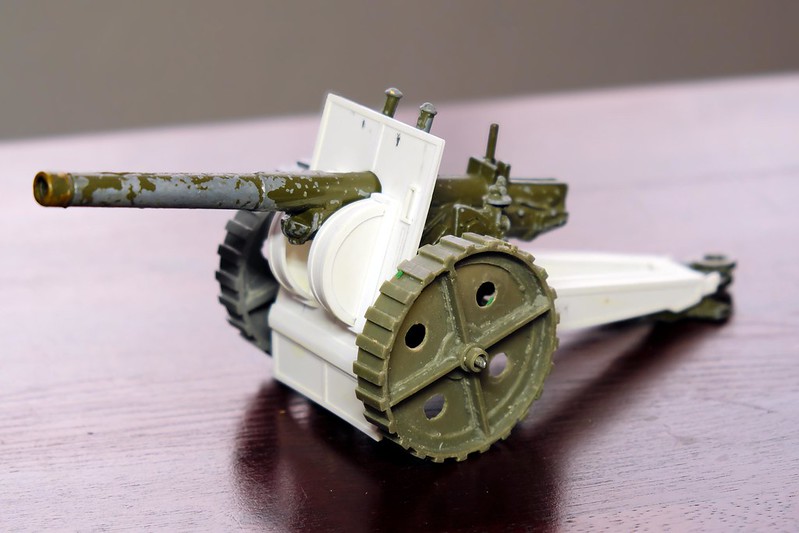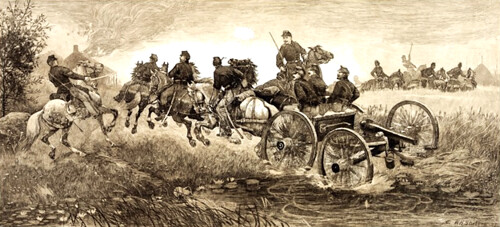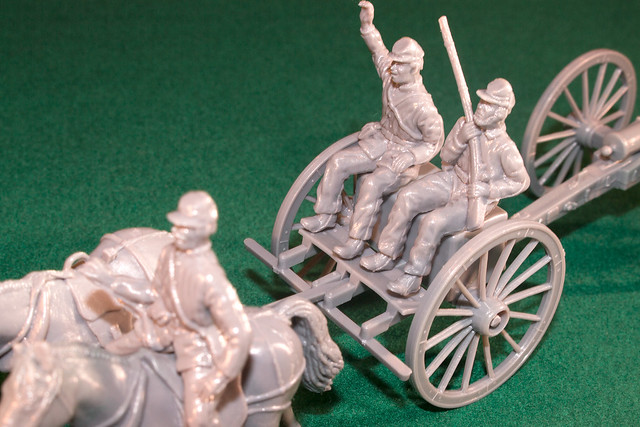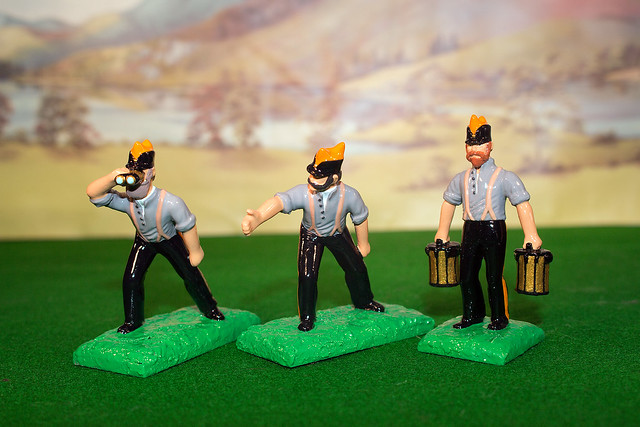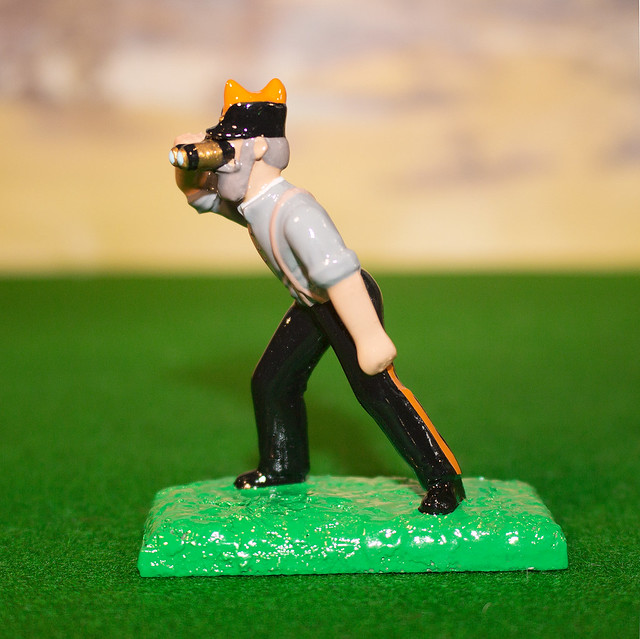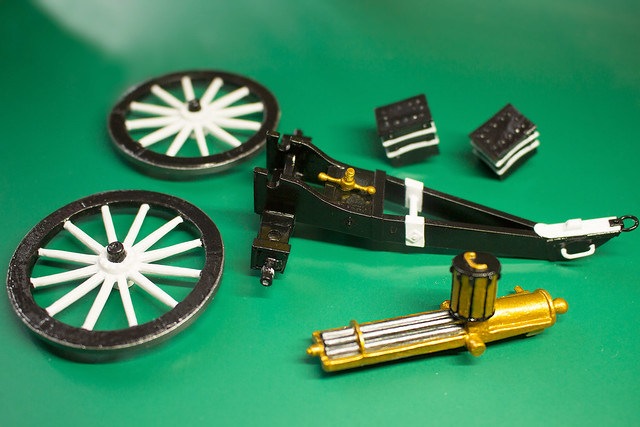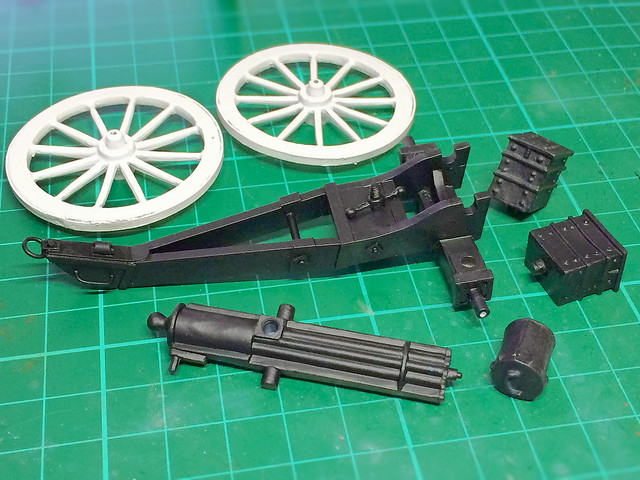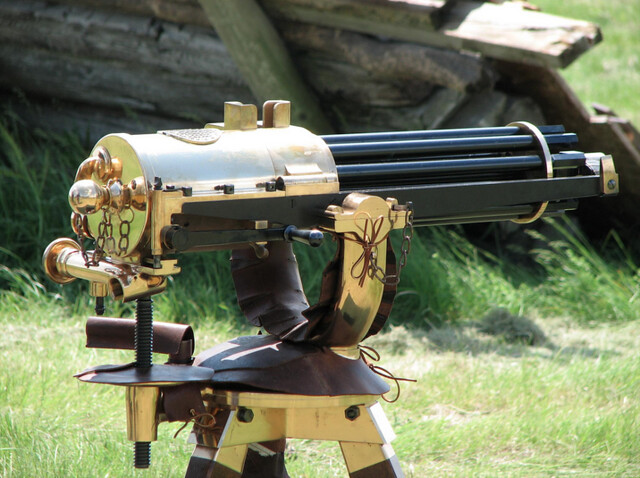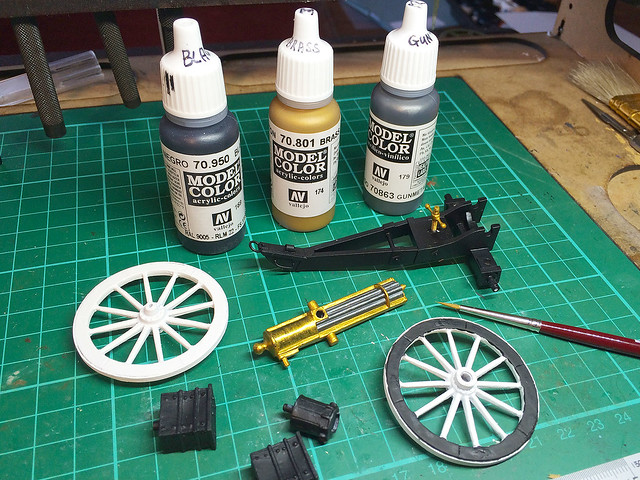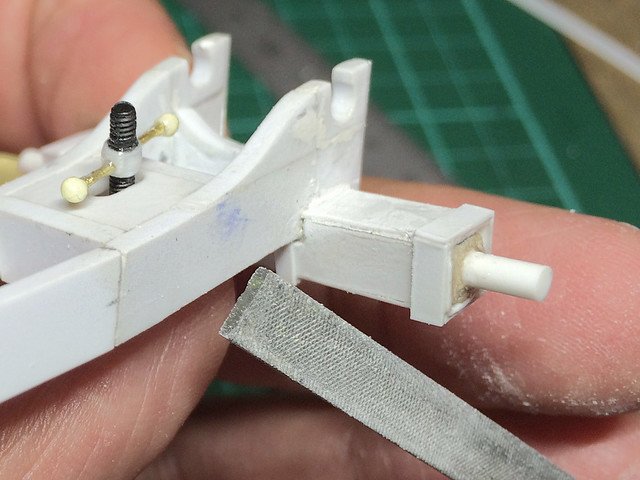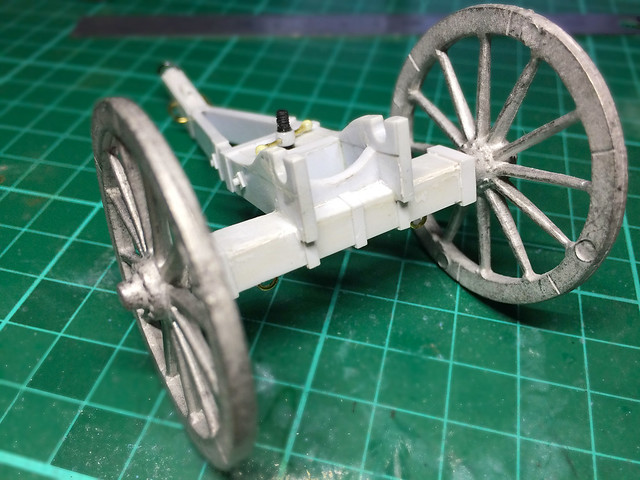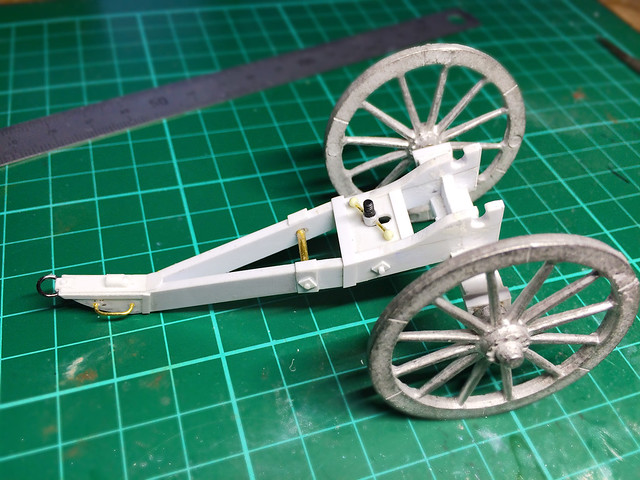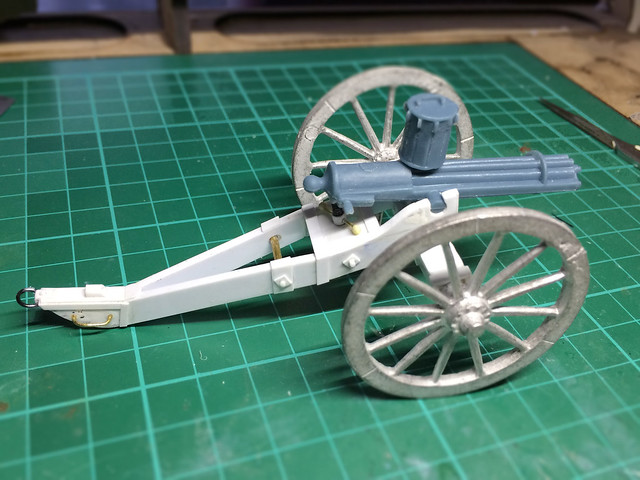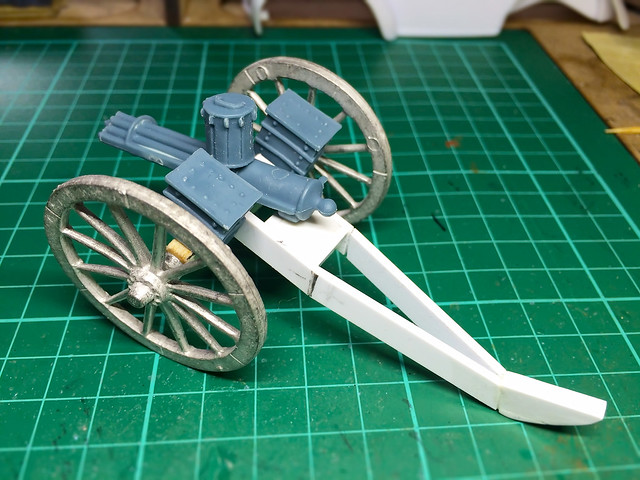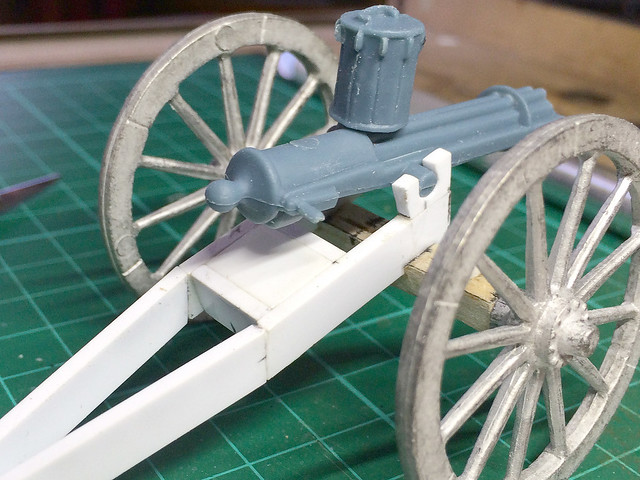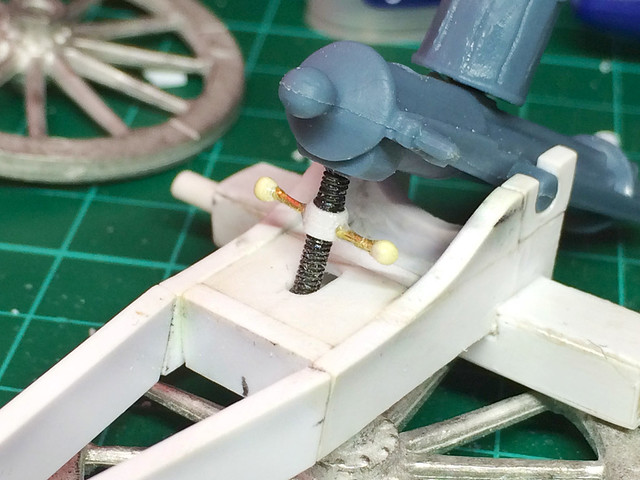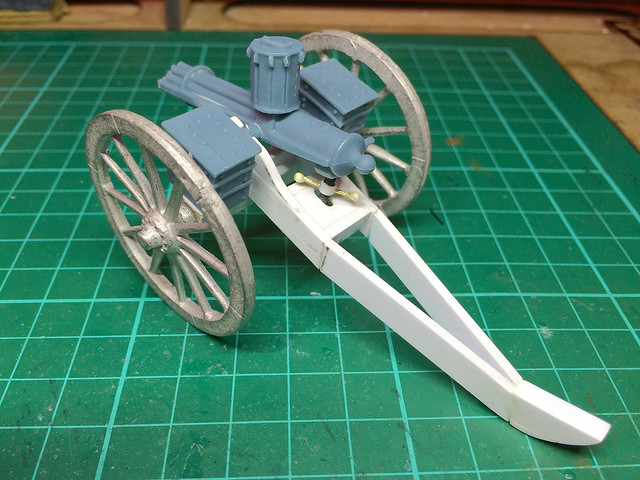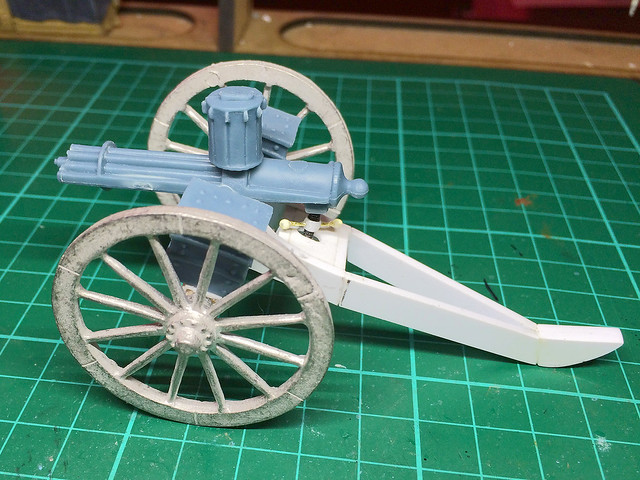As I am interested in my Molaterian field artillery at the moment I thought I should investigate how my field guns might be drawn and what limber they might use. So, I had a look around at what plastic horse artillery caisson or limbers sets there were in 1/32...The short answer is not that many.
What is a 'casson' (or caisson)?
'A caisson is a two-wheeled cart designed to carry artillery ammunition. Caissons are used to bear the casket of the deceased in some state and military funerals in certain Western cultures, including the United States and United Kingdom.' Source: Wikipeadia
 |
Diagram of a Caisson (left) and Limber (right) combination. IMEX technically
supply you with a limber, yet they call their set a 'casson' set. To a degree the
two words can be interchangeable, but were you to be pedantic a caisson is a
larger 'cart' which provides extra ammunition and other spare parts. |
While limbers and caissons are two different things, they are often confused. But, generally, the limber is a wheeled support for the 'tail' of a field gun, while a caisson is a wheeled ammunition carrier. The confusion derives from the fact that a caisson can also act as a limber.
[Note that IMEX calls it's ACW horse artillery set a 'casson' set. I presume this is due to an American interpretation of the spelling.]
 |
| Limber (right) and Caisson. Source: Wikipedia |
Anyhoo...Rather annoyingly, the only 1/32 horse drawn gun set I could find was made by IMEX - an American Civil War horse artillery set. I say annoyingly because - here in the UK - it is rather expensive at £20. Though, to be fair, it is rather a large set which includes horses, caisson, cannon and 18 figures.
As I was unable to find any review of this set, or indeed any photo reference of the contents of the box I bit the bullet, bought it and so I thought I'd produce a review of my own...
The IMEX American Civil War Confederate Complete Casson Set
The first thing you notice with the IMAX 'casson' set is the size of the box (xxx x xxx) - it's a big set!
There is a lot in the big box, with no less than 18 confederate soldiers, 4 horses plus cannon and limber (sorry, 'caisseon'). Eighteen soldiers seems a lot for a single field gun crew, and it is - x of these figures are Confederate infantry armed with Springfield/Enfield rifle-muskets and their officer.
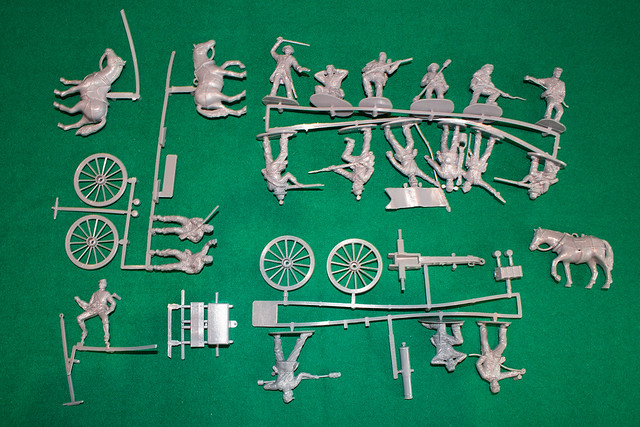 |
| One of the horses went AWOL here...But I found it later! |
The components of this set are plastic, but it is a slightly harder plastic than one normally find with plastic toy soldiers (but not plastic kit hard). This is quite nice with regards to the crispness and rigidity of the soldiers' rifles, a component that so often suffers from bending because of the soft plastics normally used.
Scale-wise the IMEX figures are close to those of - for example - Armies in Plastic, though maybe a little shorter and skinnier. Here's some comparison shots,
Armies in Plastic Union artillerymen in blue
IMEX Confederates in grey...
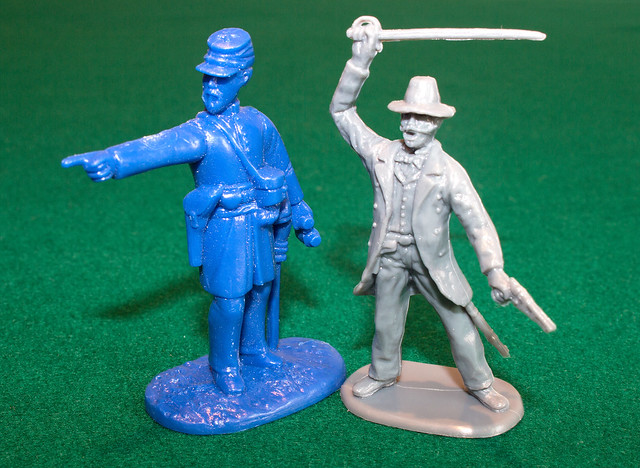 |
I suppose there isn't that much in it, depends how picky you are! The IMEX chaps
have a little more character to them I think though, in their looks and poses. |
Additionally, as you can see from my photos, the sculpting of the figures is a little more detailed or should I say 'gritty' that those of AiP's. By 'gritty' I mean the actual texture of the sculpting, which isn't as smooth as an AiP sculpt. It's a little more 'realistic' in it's attempt to recreate the folds in clothing, whereas AiP are definitely in the toy soldier camp as far as how they portray their subjects (they include less detail and material textures are simplified).
My first impression was that the IMEX Confederates were a little 'raggedy'. But, historically, I guess this was probably fair comment and this is further emphasised by the ad-hoc nature of the 'Rebs' uniforms (indeed the box art illustrates the inclusion of civilian garb as part of the Confederate dress).
 |
| The IMEX gun team figures (probably enough for two guns really). |
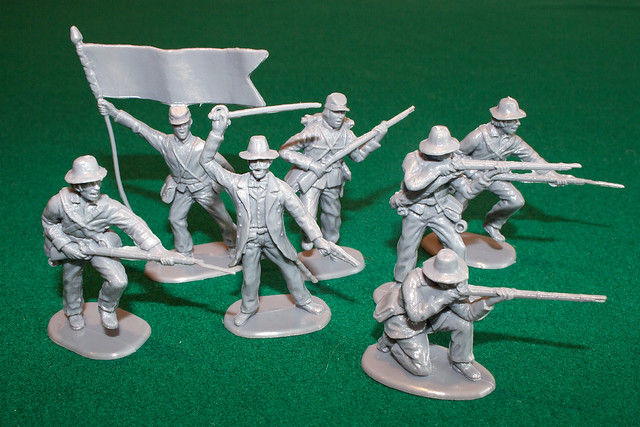 |
| The Confederate infantry platoon that accompanies the IMEX set. |
So these aren't parade ground - beginning of the war - Confederates. But I am sure ACW enthusiats will put me right on this matter!
The horses are a little disappointing. They are rather 'chubby' beasts and there is something a little comical about the expressions on their faces!
 |
Left: IMEX horse. Right: Armies in Plastic cavalry horse. The stand under the
IMEX horse is from another set, it's just there to equal out the height. |
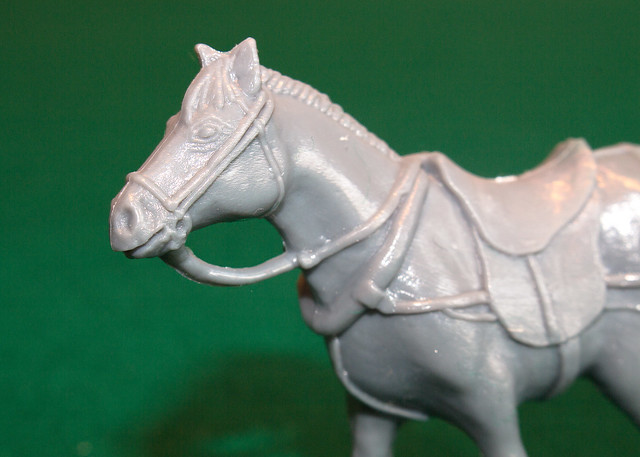 |
| Is he laughing at me? |
Scale wise the IMEX horse do look a little squat. As endearing these little fellas are they don't really say horse artillery to me - I imagined something a little bigger, leaner and muscular. The IMEX horses seem to say
'trust me with your 11 year old daughter on her point-to-point'!
The cannon is a nice piece, it's a light gun and I'd even go as far as to guess it's one of the early bronze 1841 Confederate 6 Pounders. This places it as an early ACW piece of field equipment, as by mid-war the 12 Pounder was more prevalent I believe. But I'm no expert, I'm just going by comparing the model to images on the Internet...
So overall you
do get value for money (if you compare the IMEX set's price to box sets made by AiP or Italeri), principally because of the addition of all the extra infantry.
Were I pernickety (and I am) I would be concerned how these figures fit in with my other plastic soldiers. If you have gone down the IMEX route for all of your ACW plastic soldiers then fine, but looking at the IMEX figures next to the AiP ones I'd have to hope that once I'd painted them in a similar style that the variations in scale and sculpting style might no be so noticeable
(we shall see when I paint a test figure).
Obviously, one must remember that these toy soldiers - when 'played with' as part of a war game - will be seen from tabletop or even floor distance and so any variations in scale might not be noticeable at all.
In the end though, as this is the only relatively cheap source of a 1/32 plastic full horse artillery team available in the UK you may find yourself with Hobson's Choice.
(I note, with some envy, that our American cousins have access to a wider variety of choice. For example, Classic Toy Soldiers USA make a nice ACW limber in 54mm for just $1.95! And if you want something a little special then Marx make a wonderful Commemorative Reissue of their classic Confederate Limber Play Set which comes with both a limber and a caisson for $22.95!)
--------------------
The IMEX set in the context of my FLW hobby
Having talked about the IMEX set generally I'd just like to add a brief note about the set in context of Funny Little Wars and also from the point of view of my possible use of the set.
Obviously the relevancy of this set is limited as this sort of cannon is more suitable to the mid rather than late 19th century (which is the period which interests me the most). That said there were - historically - situations where this sort of smoothbore cannon was still in use quite late, particularly in colonial campaigns and in the hands of 'native' armies and armies which were less 'modernised' than their European counterparts.
As I mentioned, I really wanted the horse team and limber components of this set for my late 19th century artillery team - particularly for an AiP Krupp 75mm gun project I have in mind - so the 6 Pounder is probably going to the spares box.
As to the figures, the artillery team will convert nicely for the role of Molatarian gunners (and auxiliary troops) but I have a cunning plan in mind for the rest of the Confederate infantry. I would really like to make a regiment of Molatero civilian irregulars, a militia unit in non-military Victorian clothing (would love to convert a few figures into full evening dress, top hats and all)!


